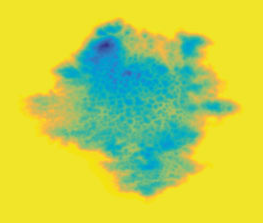Dr Elliott Wise
I'm a London-based data engineering consultant, currently working for Gutteridge, Haskins & Davey (GHD) to improve the UK's national infrastructure. I'm passionate about exploring the frontiers of mathematics, modelling, and simulation, and proud of my history tackling difficult challenges in science and engineering.
Yet more ultrasound: Defect detection and metamaterials
Following my post-graduate studies I took up a post-doctoral position at Imperial College London within the Mechancial Engineering department.
Measuring corrosion damage in metal pipes
Metal pipes can be prone to corrosion when water becomes trapped near them. Common examples include the region between an above-ground pipe and its concrete supports, and in buried pipes. If the corrosion is severe enough, then the pipe will leak its contents. This can be extremely problematic from an environmental standpoint. However, it is also very difficult to inspect for corrosion, with many pipes being extremely long and likely corrosion locations often being hidden.

To perform such inspections ultrasound waves are useful. These can propagate over long distances, and images can be formed from discrepancies between the transmitted and received waves. In this project, I have developed imaging algorithms that can accurately determine not just the location of corrosion, but also its extent. This will allow managers to make informed decisions about when pipes need to be taken out of service and repaired or replaced.
Spotting cracks in pipes with deep learning
Ultrasound imaging is widely applied in mechanical engineering to examine components for defects. An image is typically formed by timing the echoes of an emitted sound wave using an array of sensors. The longer the length of time between the sound emission and subsequent echo, the further the defect is from the array. This approach is simple and relatively robust, but neglects the complex interactions between the sound wave and defect. The result is low levels of detail in the subsequent image.
Topological imaging works by using high-accuracy, detailed simulations of the wave propagation. These can provide a much higher level of detail, but certain artefacts limit the interpretability of these images. This project used deep learning techniques to better interpret the results of the wave simulations, and thus reduce subsequent artefacts in the reconstructed images.
Understanding sound absorption in moth wings
To defend against predation by echolocating bats, moths have evolved acoustically absorbant wings. These are highly broadband and omnidirectional, as well as thinner and lighter than human-made technologies. It is hypothesised that this performance can be explained by the structure of the moth’s scales and hairs. These may form a ‘metamaterial’ surface, whose sub-wavelength resonant structure slows down the propagation of sound and allows the material more time to absorb the incoming wave.
This project aimed to understand the metamaterial properties of moth wings through exploratory simulations. The finite-element method was used to model both traditional metasurfaces (composed of sub-wavelength Helmholtz-resonators), and moth wings. It is hoped that insights from the modelled acoustical phenomena can be used to design better human-made sound absorbers.